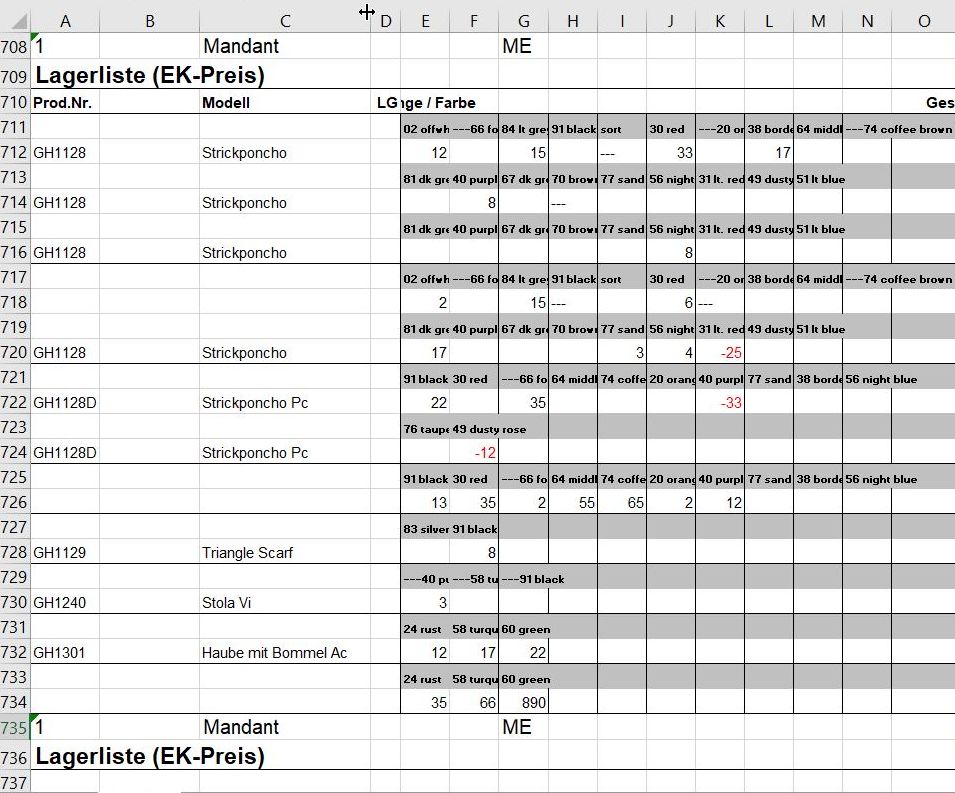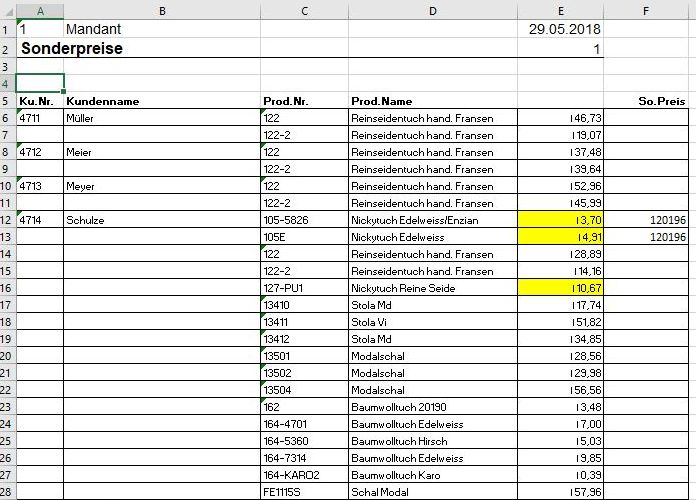A few examples of extravagant data transfers. No matter if it is variant controlled systems like TEXcom, FEE, Vario or Texware, Vepos. Even before batch-oriented products from the food sector such as Beefware or Flagranto: I get your data out of your system and bring it safely into Navision or Business Central - I promise!
TEXcom from Prosoft, an inventory management system that is still very popular, especially in the textile trade, because of its extensive variant control: here, inventories are displayed extremely compactly in Excel. Difficulties: The lines with stocks has no article numbers. The variants are in the line before. Sometimes with, sometimes without article number. Variants with - on the beginning should be deactivated during import, negative stocks should not be imported at all. And the stock prices should also be taken over immediately. In this way, other systems with variants, not only TEXcom, can be quickly and safely transferred to Navision or Business Central.

Price lists that are wonderful for humans to read, but often present challenges to programmers. With a bit of clever C/Side code and some thought, even this data gets into Navision error-free

How do data from legacy systems get into Navision? There is no general rule for this, every system change is different. But so far I have always managed to read out the necessary data from the legacy system. I do not even shy away from RS232 couplers and printer emulations. In this way, the legacy system "thinks" it is printing its list to some printer as usual. I fish this data stream and filter out the accounts, movements, stocks, prices I am looking for. Once these are available in a text file, they can also be imported into Navision.
This way I get data out of even an AS/400 with RPG, or a Siemens Nixdorf Quattro 8870 with Comet. A pro pos Comet: Have you ever wondered where the "strange" function key assignment in Navision 3.53-3.56 and the Windows versions Navision 1.30, Navision 2.01 to Navision 2009R2 comes from? E.g. F3 = create, F4 = delete? Take a courageous look at the Nixdorf/Comet Business Basic. You will be amazed how much of Navision you will discover there. The ingenious database query loops, for which the programmer has to do practically nothing, the mask generator, the report generator... Navision has borrowed an incredible amount from the former market leader Siemens Nixdorf / Comet!
With this old root, it is even easier for me to convince Comet users/Business Basic users or even users of the modern Cross Basic to easily switch to Navision or Business Central.
Compressed or detailed data transfer? Both are possible, of course. From our experience, however, I strongly recommend NOT to mix this per data area. So either per G/L account, customer, vendor only the totals/balances, or in the whole accounting every single available item without compression. I regularly find errors in the legacy system, for example, when the transferred article movements or journal entries do not correspond to the transferred stock of an article or the balance of a transferred account. Of course, in this case, a correction run is also programmed, which automatically makes the necessary corrections. In this way, a data transfer from a legacy system also serves the purpose of data cleansing.
A great example of this is detachments from Beefware, which I had my hands on a long time ago. The inventory on the items was correct, but the item transactions showed a total that didn't match. So what didn't fit before in the original was made to fit directly in the import.

